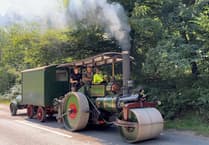Residents may recall being asked to contribute to the ‘Having Your Say on the Future of Councils within Gloucestershire’ this survey that took place over the summer, which was jointly commissioned by the county council and all six district councils to establish the public’s views on what makes in our case , the Forest a special place.
The findings from this survey have been complied into a report which will form part of a business case we are required to submit to the Government as the next step in Local Government Reorganization (LGR). The work will be completed next week and must be submitted to the Ministry of Housing Communities and Local Government (MHCLG) by 28 November 2025. The work once concluded will be posted on the Council’s website and scrutinised by all elected members at full council meeting on November 13.
It is disappointing to note that to date, town and parish councils have been excluded by Government from the LGR discussions, which seems absurd, and so the district council has been working with Gloucester Association of Parish and Town Councils
The meetings were facilitated by Chris Haine and Kerrin Wilson from GAPTC, and supported by key officers from the Communities Team at the Forest of Dean District Council, along with myself, the Council’s CEO, Nigel Brinn, and the Cabinet member for Thriving Communities Jackie Dale.
The question many are asking is what will replace the district council when we cease to exist? The Government is promoting Neighbourhood Area Committees or Partnerships. Their role would be to provide a local voice to ensure democratic accountability.
So just what are Neighbourhood Partnerships?
Each Neighbourhood Partnership would cover a local area, typically a town and its surrounding villages, or a recognisable neighbourhood in a larger town or city. These areas would be designed to reflect natural communities, with populations of around 20,000 to 50,000 people.
Neighbourhood Partnerships would bring together the unitary councillors, community organisations, parish and town councils, and public sector partners (such as health, police, and schools) to work more closely with residents. Their purpose would be to ensure services are shaped by local needs and to help communities have a stronger voice in how decisions are made. They would be supported by a partnership manager and small staff team supporting both the partnership and the casework of the councillors.
For many teams, this could mean changes in how services are delivered, how priorities are set, and how feedback is gathered and acted upon. This could mean changes in leadership, organisational culture, expectations with transformation and how services work with partners. For many officers, NACs will help enhance the great work they are already doing in services and within local areas.
Many other established unitary councils have adopted this model with varying degrees of success, and it is hoped that the new unitary council that will serve the Forest of Dean will learn from the experiences of others and ensure these groups are properly resourced with staff and funds so they can fulfil their roles effectively.
For this approach to succeed, I think it is vital that county councillors, parish and town councillors are clear about their respective roles and responsibilities and are suitably trained to undertake them without being impeded by political issues and lack of time commitment.
Further details on how this model might work in practice will be available as soon as possible on the council’s website. A government consultation of the regulations governing the Neighbourhood Area Committees is anticipated shortly.



Comments
This article has no comments yet. Be the first to leave a comment.